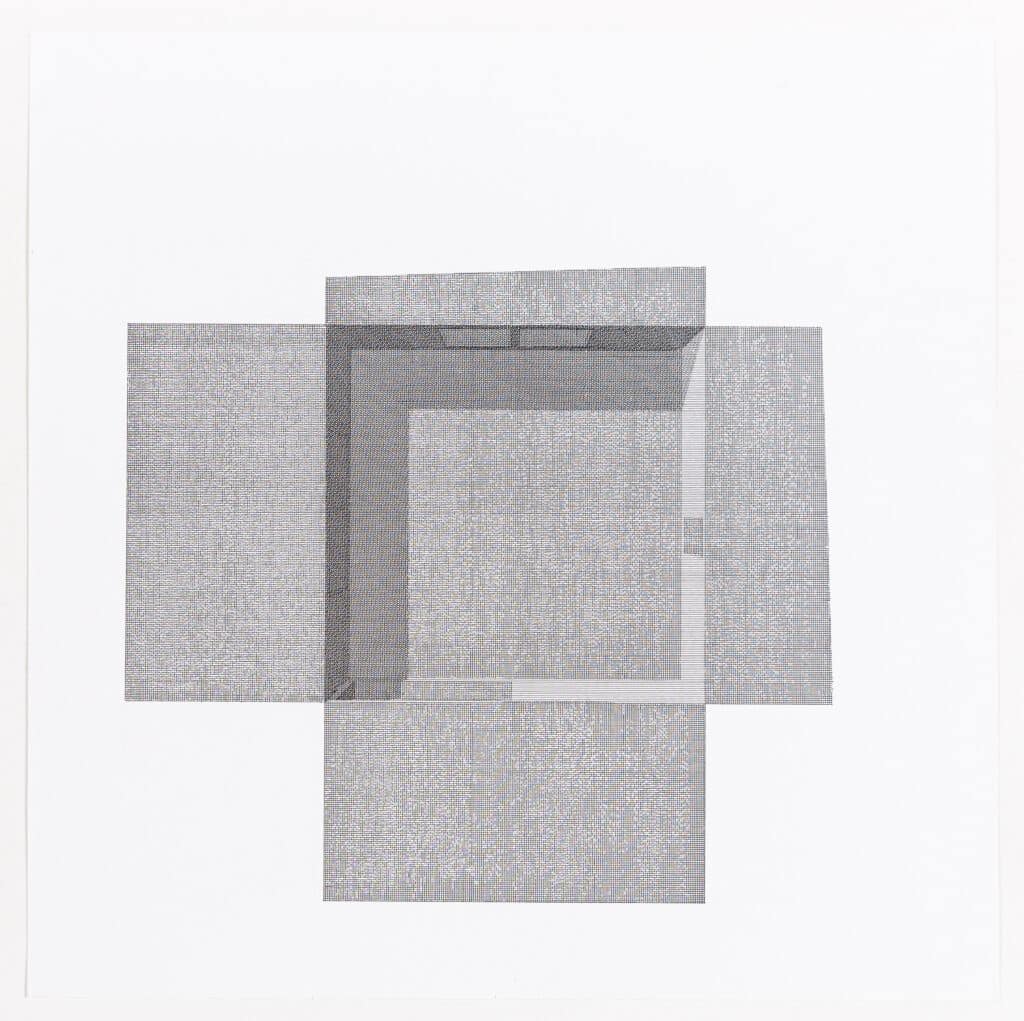The Marriage of Reason and Squalor

The Marriage of Reason and Squalor is a set of drawings I’ve produced since 2001. They are an investigation into what, in the absence of a better definition, I’ve called ‘non-compositional architecture’. Since the very beginning, I’ve conceived of these drawings as something to be executed by the simplest of means, and all starting with a 500 mm by 500 mm sheet of paper on which I draw with pencil and ink a building with no specific programme. Each of the resulting building plans then emerges according to the following constraints: choose the simplest geometrical form (i.e. a square) and then work out its further articulation from the logic of the initial form. The organisation of plans and elevations must be the logical consequence of the first step. In addition, the spatial organisation of the proposed building must adhere in all its parts to the logic of the initial form, including its proportion, symmetries and internal relationships.

For more than two centuries the architectural project has lost the certainty that had originally linked it to clear liturgies and programmes. It is for this reason that composition has gained relevance within the making of architecture. Composition was the art of putting together not just forms, but also uses and programmes whose combination was increasingly uncertain and unstable. If composition puts the emphasis on formal autonomy, it does so because within programmatic instability form is devoid of any meaningful relationship with the uses and the gestures that form is supposed to contain. And yet with its ‘innocent’ goal of a ‘good form’, composition is the subliminal way of legitimising the bad faith of the content to which composition is expected to give a reasonable appearance.

In the history of twentieth-century painting there have been various attempts to go beyond composition as an ‘ideology’ of balance. The art historian Yve-Alain Bois has talked about ‘the difficult task of erasing oneself’ with reference to works such as Black Square by Kasimir Malevich, the zip paintings by Barnett Newman and the strip paintings by Frank Stella. The Marriage of Reason and Squalor is the title of a painting produced by Stella in 1959. Like all his early black paintings, it consists of concentric stripes whose form follows the shape of the canvas and the latter’s vertical axes of symmetry. I’ve always been deeply fascinated by the non-compositional logic of Stella’s early paintings because to me they evoke both the abstract motifs of archaic buildings and the generic character of more recent anonymous industrial architecture. To put it in musical terms: Greek chorus meets The Ramones.

Within the tradition of architecture we could think of parallels in ancient Chinese architecture where the form of buildings or cities was deduced by the subdivision of an initial simple form (a square or a rectangle), rather than by multiplication or addition. Once a form was decided, all its further articulations were logically deduced from this initial step.
In this sense, non-compositional architecture offers a kind of paradox: on the one hand, it is the explicit result of a clear decision, and on the other, its inexorable logic erases its ‘authors’. More fundamentally, non-compositional architecture is non-functional, non-narrative and non-justifiable.
